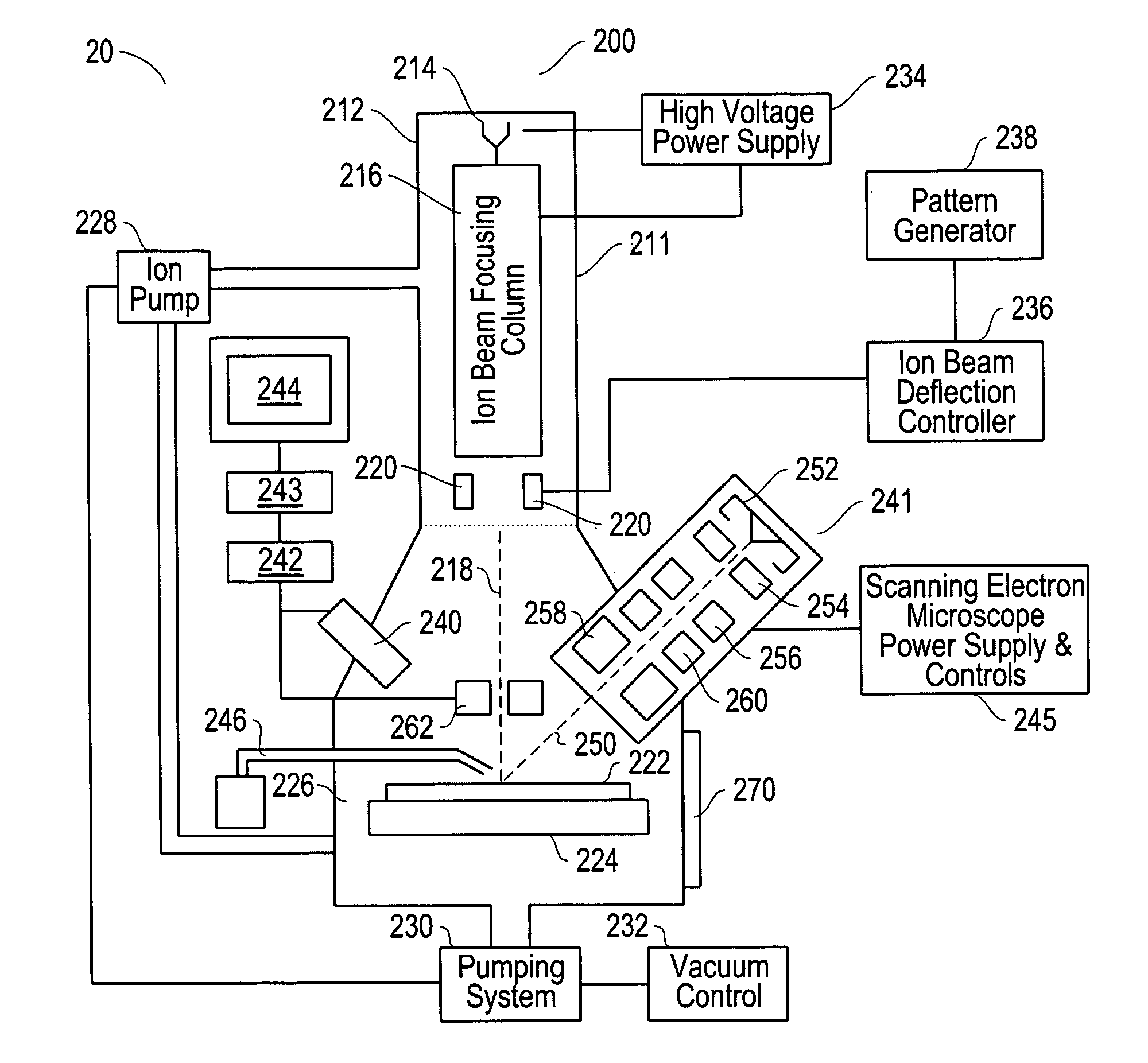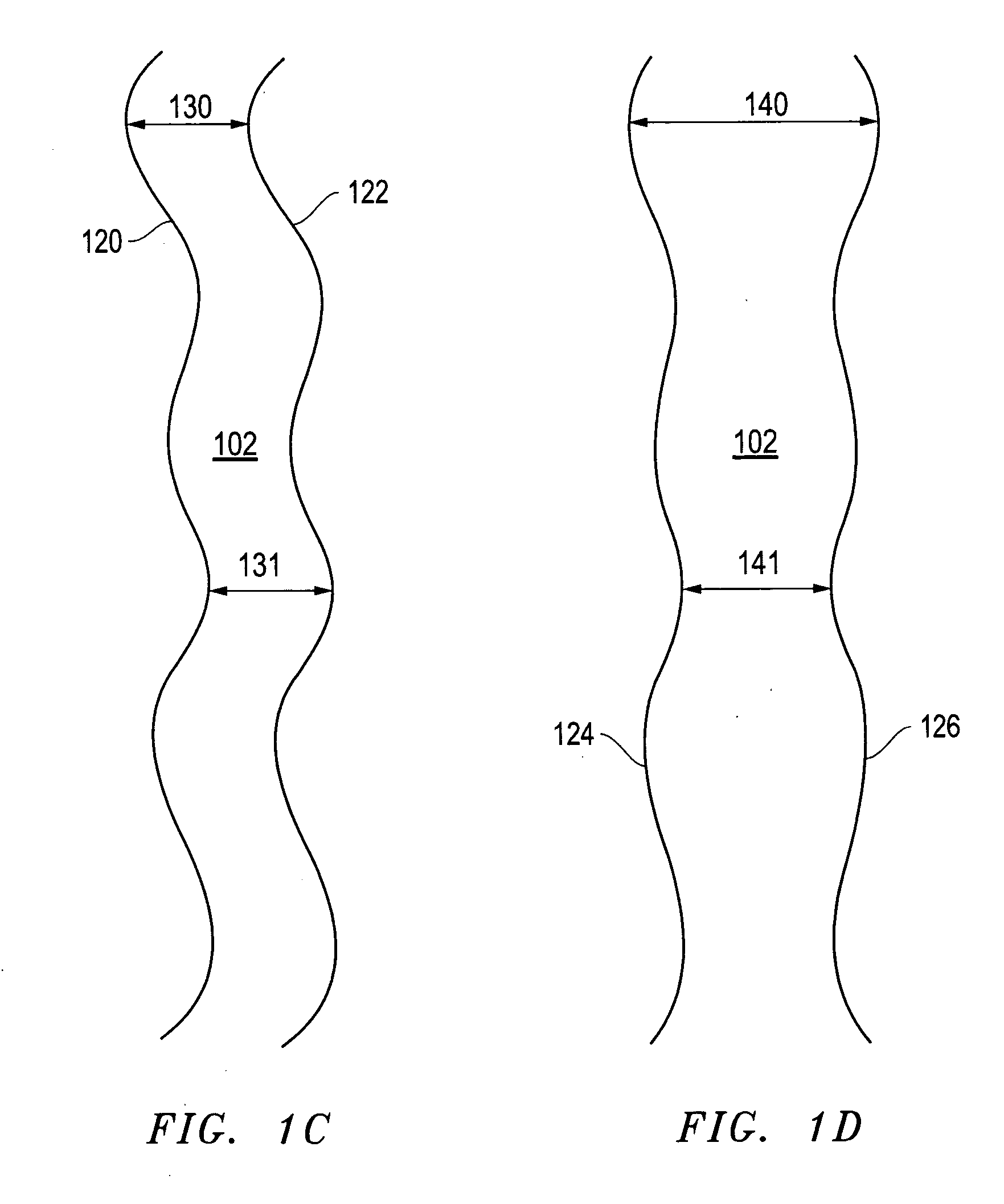Method of measuring three-dimensional surface roughness of a structure
- Summary
- Abstract
- Description
- Claims
- Application Information
AI Technical Summary
Benefits of technology
Problems solved by technology
Method used
Image
Examples
Embodiment Construction
[0035] Preferred embodiments of the present invention are directed to methods and an apparatus for measuring the three-dimensional surface roughness of a structure or feature. In a preferred embodiment of the present invention, the sample to be measured is loaded into a dual beam FIB-SEM. The FIB is used to mill a succession of cross-sections or “slices” of the feature of interest at pre-selected intervals over a pre-selected measurement distance. As each cross-section is exposed, the SEM is used to measure the relevant dimensions of the feature. Data from these successive “slices” is then used to determine the three-dimensional surface roughness for the feature.
[0036] Although much of the following description is directed toward the measurement of the width of a structure, the methods of the present invention are equally applicable to any relevant dimension, including height, slope, sidewall angle, etc. Further, although much of the following description is also directed toward th...
PUM
 Login to View More
Login to View More Abstract
Description
Claims
Application Information
 Login to View More
Login to View More - R&D
- Intellectual Property
- Life Sciences
- Materials
- Tech Scout
- Unparalleled Data Quality
- Higher Quality Content
- 60% Fewer Hallucinations
Browse by: Latest US Patents, China's latest patents, Technical Efficacy Thesaurus, Application Domain, Technology Topic, Popular Technical Reports.
© 2025 PatSnap. All rights reserved.Legal|Privacy policy|Modern Slavery Act Transparency Statement|Sitemap|About US| Contact US: help@patsnap.com



